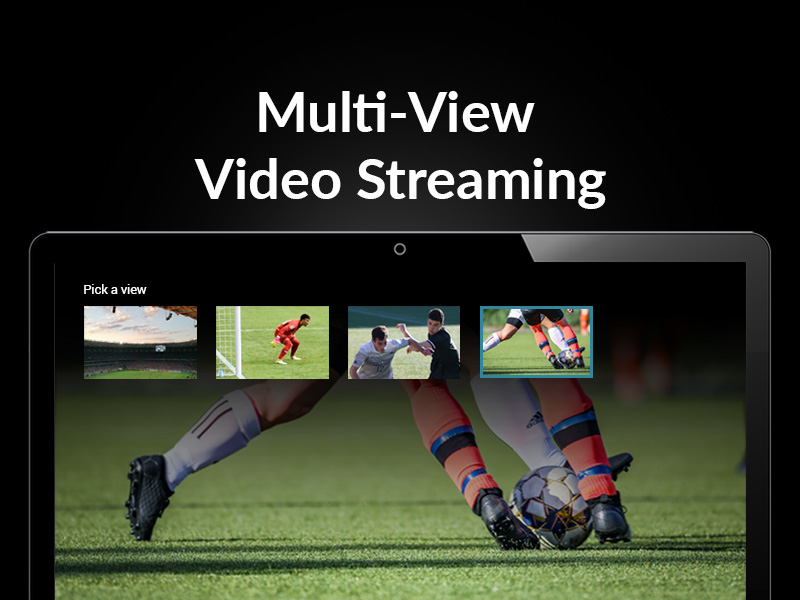In this article, we review one of such advantages, called multi-view video streaming or Multi-View, also known as multi-camera or multicam. Five years ago, first instances of multi-view video streaming have appeared in the wide circulation. After its early stride and despite an increase of video streaming in general due to COVID lockdowns, its adoption is slow.
Traditionally, live director was deciding which of the camera views would be shown to the viewers. Furthermore, viewers could see only one screen. Although nowadays we already have technology available to end-users where AI selects from multiple sources which camera out of multiple cameras will be selected for the main screen, another direction of development was to allow video consumers to select what they want to see.
Multi-View is a feature that puts the end-user in control, allowing her to select the number of camera positions in the screen, which she wants to see, and which camera goes into which screen position. In this way, end-users can tailor their own streaming experience. Viewers who are able to control what there are viewing will in aggregate be more satisfied. After all, if they revert to the default single screen, they may get the same experience as prior to Multi-View.
Audio is peripheral in Multi-View, and it is usually managed through one of the three approaches:
- Each camera can have its own audio,
- Audio can be as default tied to the audio of the master camera feed, or
- Audio sources can be decoupled from camera feeds.
A good example of the third approach is, a specialized Multi-View of UFC Fight Pass. Created for the Ultimate Fight streaming service, the audio streams are separated based on language such as English and Spanish or the corner of a fighter. On the other hand, cameras for Multi-View are positioned dominantly above the fighters.
Carousel of thumbnails which acts as the screen selector is accompanying Multi-View if the device screen is large enough to accommodate it, on: desktops, Smart TVs, tablets and some mobile phones.
If this technology is so good, how come it is not yet mainstream?
In central & south-eastern Europe the main issues stem from the increased bandwidth. Video quality of OTT services in the regions of CEE & SEE ranges from SD to FHD, but it does not go above, because 2K multiplies costs on the side of the streaming service while the consumers primarily watch in lower quality because of the bandwidth in their mobile carrier plans. Costs are such that end-users are not prepared to pay more for the higher video quality and adding multiple streams would multiply the costs. Multi-View acts as a multiplier primarily on bandwidth, because double the number of the streams, double the bandwidth of both the sender and the receiver.
Will this technology ever come to our regions?
Yes, it will. As the broadband speeds grow, so does the number of users who would rather watch multiple screens in HD or FHD as opposed to a single screen in a higher resolution. So, stay tuned for more information about Multi-View, or tell us your thoughts on the subject. AVIION can handle multiple screens in different ways, what would be an ideal Multi-View behaviour for your users?

